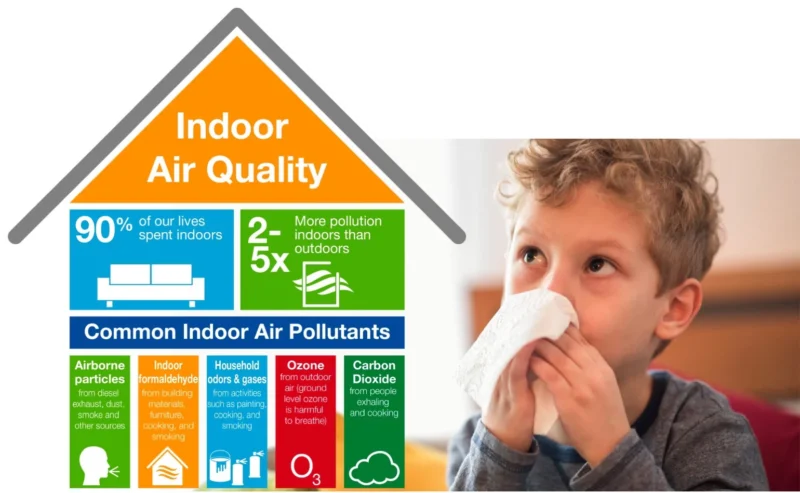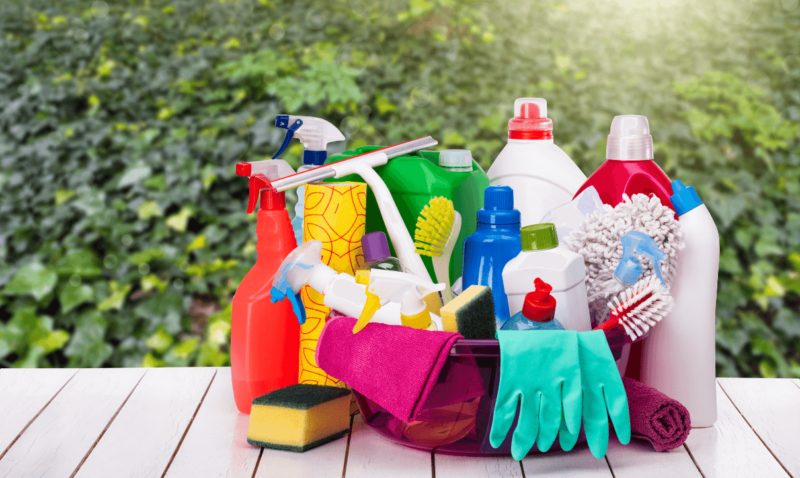Indoor air pollution is a pressing issue that affects the health and well-being of individuals worldwide. From everyday household products to environmental factors, the air inside our homes can be filled with various pollutants that pose a risk to our respiratory health. Common indoor air pollutants include volatile organic compounds (VOCs) from cleaning products and furniture, allergens like dust mites and pet dander, as well as radon and carbon monoxide from sources like gas stoves and fireplaces.
In order to combat these pollutants and create a healthier indoor environment, it is essential to understand their sources and take proactive steps to mitigate their impact. By implementing proper ventilation, using air purifiers, and reducing the use of harmful chemicals, individuals can significantly improve the quality of the air they breathe in their homes.
Common Indoor Air Pollutants: Identifying the Culprits

Understanding the sources of common indoor air pollutants is essential in identifying and combating the culprits that may be compromising the air quality in your home. Some of the most prevalent indoor air pollutants include volatile organic compounds (VOCs) emitted from household products like cleaning supplies and paints, as well as tobacco smoke, pet dander, and dust mites.
These pollutants can exacerbate respiratory issues, cause headaches, and contribute to overall poor indoor air quality. By identifying and addressing the sources of these pollutants, you can take steps to improve the air quality in your home and promote a healthier environment for you and your family.
Understanding the Dangers of Indoor Air Pollution

Understanding the dangers of indoor air pollution is crucial for our health and well-being. Common indoor air pollutants such as mold, dust mites, pet dander, cigarette smoke, and volatile organic compounds can pose serious health risks if left unchecked. These pollutants can exacerbate respiratory problems, trigger allergies, and even contribute to long-term health issues such as asthma and other respiratory diseases.
It is essential to be proactive in combating indoor air pollutants by implementing proper ventilation, using air purifiers, regularly cleaning and vacuuming, and minimizing the use of harsh chemicals and products that emit harmful fumes. By being aware of the dangers of indoor air pollution and taking necessary steps to combat them, we can create a healthier living environment for ourselves and our loved ones.
Sources of Indoor Air Pollutants: From Furnishings to Cleaning Products

Sources of indoor air pollutants can come from a variety of everyday items found in homes. Furnishings such as carpets, couches, and curtains can release volatile organic compounds (VOCs) which contribute to indoor air pollution. Cleaning products containing chemicals like ammonia and bleach can also emit harmful fumes.
Other sources include cooking activities, smoking indoors, and even air fresheners. These pollutants can cause health problems such as respiratory issues, headaches, and allergies. To combat indoor air pollutants, it is important to choose low VOC furnishings, use natural cleaning products, ensure proper ventilation, and consider investing in air purifiers. By being mindful of the sources of indoor air pollutants, individuals can create a healthier indoor environment for themselves and their families.
Conclusion
In conclusion, it is evident that indoor air pollutants can have a significant impact on our health and well-being. From volatile organic compounds to mold spores, these contaminants can be a threat to our respiratory system and overall quality of life.
However, by following simple steps such as improving ventilation, using air purifiers, and conducting regular mold assessment, we can effectively combat these pollutants and create a healthier indoor environment for ourselves and our families. It is crucial to stay informed and proactive in our efforts to reduce indoor air pollutants and prioritize our health and well-being.


